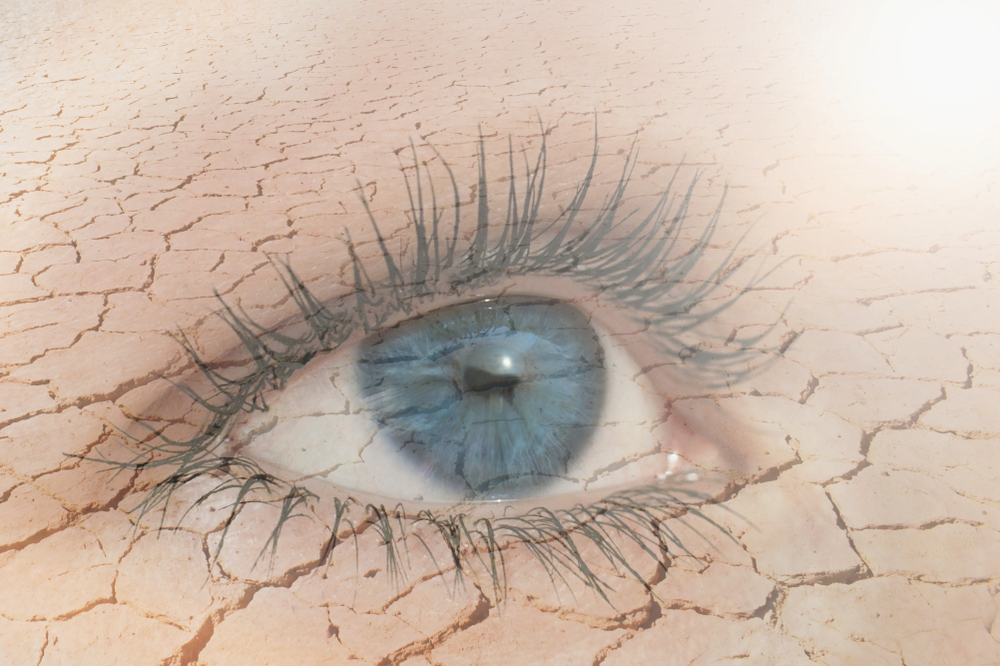
Chronic dry eye is not a singular condition but rather a group of disorders known as Dry Eye Syndrome. These disorders all result in the same outcome: a reduction in the quantity and/or quality of tears, leading to chronic discomfort and visual disturbances.
Common Causes of Chronic Dry Eye
Understanding the common causes of chronic dry eye is crucial to mitigating its effects and finding an effective treatment. One of the primary causes is meibomian gland dysfunction (MGD). The meibomian glands are small oil glands located along the edge of your eyelids, and their primary function is to secrete oils onto the surface of your eyes. These oils help prevent the evaporation of your tears.
If these glands become blocked or start producing poor-quality oil, it can lead to MGD. Other common factors include age, hormonal changes, dietary deficiencies, certain medications, and environmental conditions.
Additionally, conditions like blepharitis, Sjogren’s syndrome, and other autoimmune disorders can also lead to chronic dry eye.
Recognizing the Symptoms
The most common symptoms include a persistent dry, gritty, or scratchy sensation in the eyes. Some people even feel like they have something in their eyes—a symptom known as a foreign body sensation.
Other symptoms include red eyes, a burning sensation, blurred vision, and sensitivity to light. In severe cases, it can even cause pain and lead to vision loss. Interestingly, some people with dry eyes may experience watery eyes. This is because dryness on the eye's surface will over-stimulate production of the watery component of your tears as a protective mechanism.
How Chronic Dry Eye is Diagnosed
A chronic dry eye diagnosis involves a comprehensive ocular surface examination (OSE). This includes a detailed history of your overall health and your eye health, focusing on the onset, duration, intensity, and frequency of your symptoms. We perform several tests to measure the quantity and quality of your tears, lid anatomy, blink and eye closure issues, meibomian gland structure, conjunctival integrity, corneal health, and more.
One common test involves the use of dyes in eye drops to visualize the tear film and check for dry patches on the cornea. Biomicroscopy, a type of examination using a slit lamp microscope, can also be used to examine the eyelids, cornea, and conjunctiva in detail.
Treatment for Chronic Dry Eye
At Jackman Optometry, we offer expert treatment for chronic dry eye. Our approach is multifaceted, focusing not only on alleviating your symptoms but also on addressing the root cause of your dry eye. We understand that every patient is unique, and so are their eyes. That's why we tailor each treatment to suit your individual needs.
We offer a range of treatments, from simple lifestyle modifications and over-the-counter eye drops to prescription medications and in-office procedures. If meibomian gland dysfunction is the underlying cause of your dry eye, we offer treatments specifically designed to restore the normal function of these glands.
Managing Chronic Dry Eye Effectively
Living with chronic dry eye can be challenging, but understanding what it is, its causes, recognizing the symptoms, and getting the right diagnosis are the first steps to managing this condition effectively.
At Jackman Optometry, we are committed to providing individualized treatment and care for those suffering from chronic dry eye. We believe that with the right guidance, you can successfully manage your dry eye symptoms and maintain your vision quality in the long run.
If you are experiencing symptoms of chronic dry eye, consult with our professionals at Jackman Optometry at our office in Orange, California. Please call (714) 543-2022 to schedule an appointment today.





